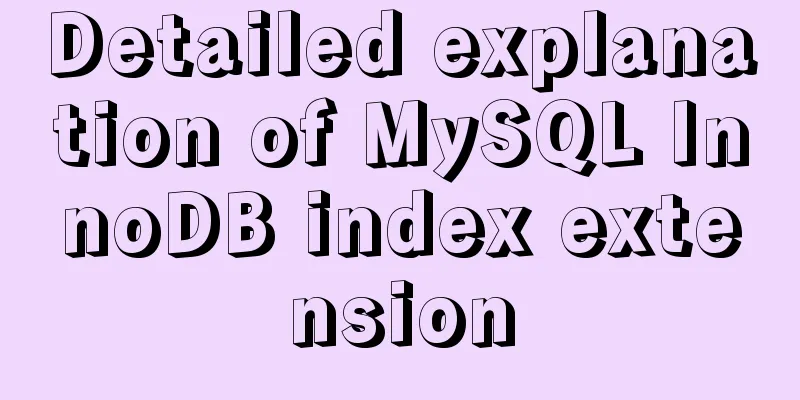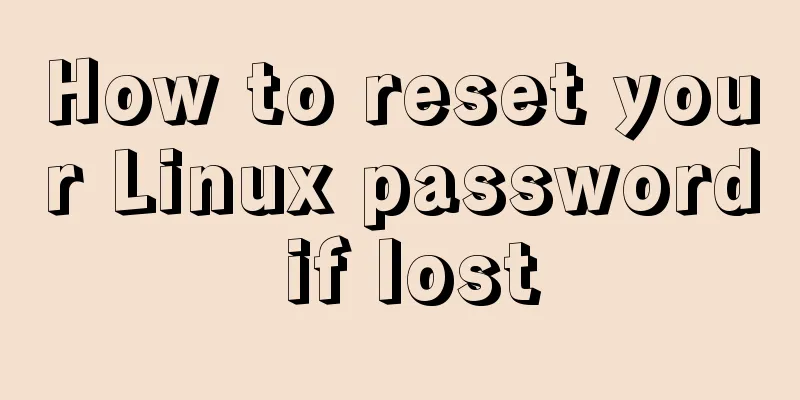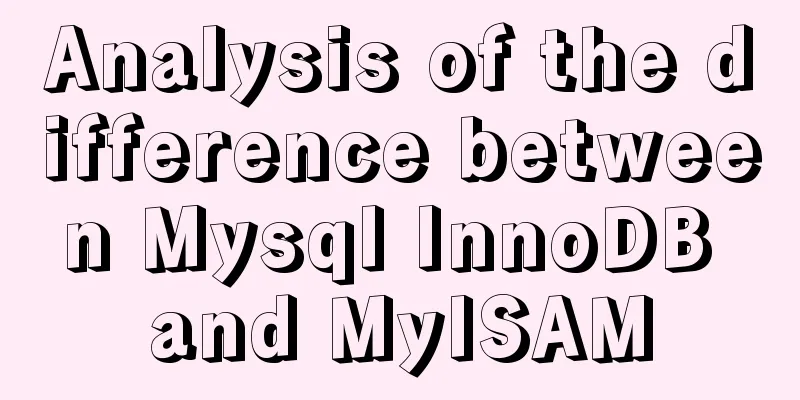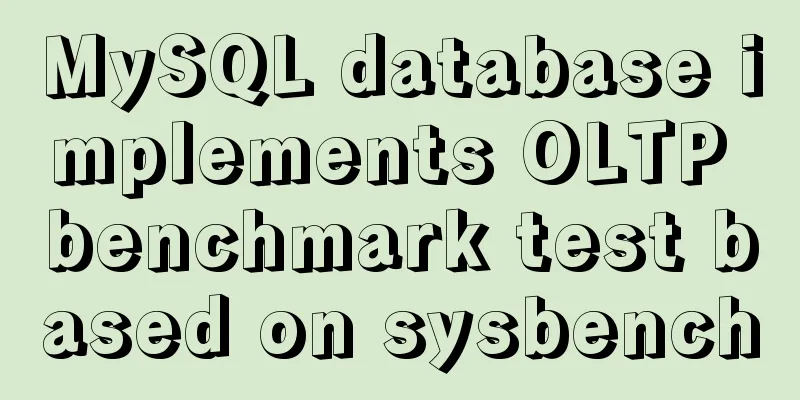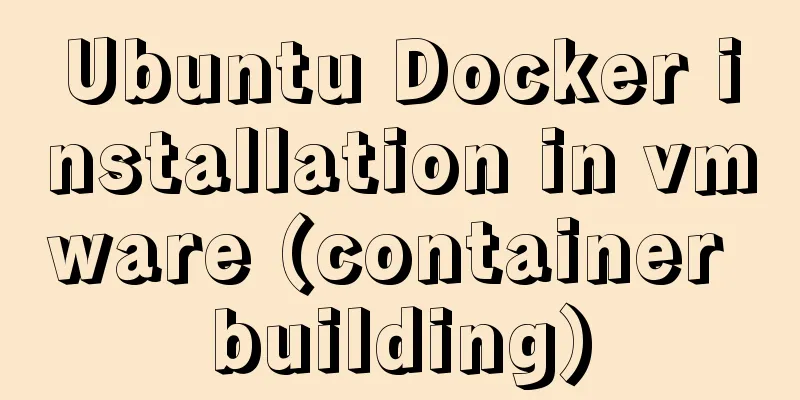Detailed tutorial on installing MySQL database in Linux environment

|
1. Install the database 1) yum -y install mysql-server (simple) The yum command automatically searches for MySQL service resources on the Internet, downloads them to the local computer, and completes the installation.
2) You can also download the MySQL service online, transfer it to the Linux system via xftp, and install it yourself (usually in the usr or opt directory) 2. Start the database After the installation is complete, execute the command service mysqld start
3. Log in to the database mysql -u root -p Press Enter and enter the password (the default user of mysql is root and the password is empty)
4. Use a database After successful login, switch to MySQL database and enter: use mysql— There are 3 databases by default under MySQL service. To operate a table in a database, enter it with use first.
5. Connect to the database : Use Navicat for MySQL to connect to the database 1) Query all users who can log in and hosts that support links from the user table: select user,host,password from user; (mysql statements all end with a semicolon)
2) The difference between the value of the host field in the user table being % or localhost host=%, means all IPs have connection permission 3) Create a new root user and grant this user the operation permissions for all databases and all objects. The % in this authorization statement means that any host can connect to the MySQL server. In this case, there will be no problem using the Navicat client. The authorization statement is: grant all privileges on *.* to 'root'@'%' identified by '123456' with grant option; all privileges: all permissions—add, delete, modify, and query *.* (database name. table name): * before . means all databases, * after . means all tables, *.* means all tables in all databases under MySQL service Eg: mysql.user—user table under mysql database flush privileges;—refresh privileges
4) If the internal server cannot be connected, turn off the firewall and exit mysql first (exit or Ctrl+C) If the cloud server cannot be connected, open port 3306 (MySQL default port) in the cloud server security component.
6. Steps to uninstall mysql 1) Uninstall mysql installed by yum (only applicable to mysql installed by yum command) yum -y remove mysql*
2) Find the mysql installation file find / -name mysql 3) Use rm-rf to delete the found mysql files
4)Start/Stop/Status of MySQL Service service mysqld start/stop/status If there are multiple MySQL services on a server, modify the default port number in the /etc/my.cnf file 7. Supplementary content - knowledge points on internal and external networks 1) Differences between internal and external networks Intranet is also called LAN or private network, which can only be accessed by users in a single LAN. Eg: ping the intranet IP 192.168.88.133
The external network is also called the wide area network or public network. It is an IP address that can be accessed by all users on the Internet. Eg: ping public network IP 106.52.90.235
2) The local computer needs to access the test environment and ensure that it is in the same LAN, that is, in the same IP network segment (the red part of 192.168.88.133) 8. Supplementary content - common network knowledge points 1) The difference between TCP and UDP: TCP is a reliable transmission protocol because it needs to establish a connection to transmit data, while UDP is not 2) TCP establishes a connection and shakes hands 3 times, and disconnects the connection and waves 4 times Connection handshake 3 times: A and B send and receive functions normally üFirst time: A→B sends a message, B receives the message (B knows: B received the message OK, A sent the message OK) ü Second time: B→A sends a message, A receives the message (A knows: B sent OK, A sent and received OK) ü The third time: A→B sends a message, and B receives the message (B knows: B sent OK) Disconnect: wave 4 times üFirst time: A→B, tell B that data sending is complete and the connection needs to be disconnected ü The second time: B→A, let A wait until B receives the data üThird time: B→A, data transfer is complete, you can disconnect ü The fourth time: A→B, the connection will be disconnected after XX seconds Summarize This is the end of this detailed tutorial on how to install MySQL database in Linux environment. For more information about installing MySQL in Linux environment, please search for previous articles on 123WORDPRESS.COM or continue to browse the following related articles. I hope you will support 123WORDPRESS.COM in the future! You may also be interested in:
|
<<: Mac node deletion and reinstallation case study
>>: After Webpack-cli is successfully installed, check the webpack -v error case for details
Recommend
Detailed explanation of MySQL group sorting to find the top N
MySQL group sorting to find the top N Table Struc...
18 Nginx proxy cache configuration tips that operators must know (which ones do you know?)
We all know that the performance of applications ...
Teach you a trick to achieve text comparison in Linux
Preface In the process of writing code, we will i...
MySQL index coverage example analysis
This article describes MySQL index coverage with ...
Detailed explanation of the differences and usages of Linux system shutdown commands
What are the shutdown commands for Linux systems?...
How to use an image button as a reset form button
When we make a form, we often set a submit button ...
Detailed tutorial on how to deploy Springboot project using Nginx on the server (jar package)
1. Package the Java project into a jar package He...
MySQL partitions existing tables in the data table
Table of contents How to operate Operation proces...
Linux disk management LVM usage
1. Introduction to LVM When we manage Linux disks...
12 Javascript table controls (DataGrid) are sorted out
When the DataSource property of a DataGrid control...
CSS -webkit-box-orient: vertical property lost after compilation
1. Cause The requirement is to display two lines,...
In-depth understanding of CSS @font-face performance optimization
This article mainly introduces common strategies ...
Detailed installation tutorial of mysql5.7.19 decompressed version (with pure cracked Chinese version SQLYog)
Mysql5.7.19 version is a new version launched thi...
How to add double quotes in HTML title
<a href="https://www.jb51.net/" titl...
Dockerfile text file usage example analysis
Dockerfile is a text file used to build an image....
















